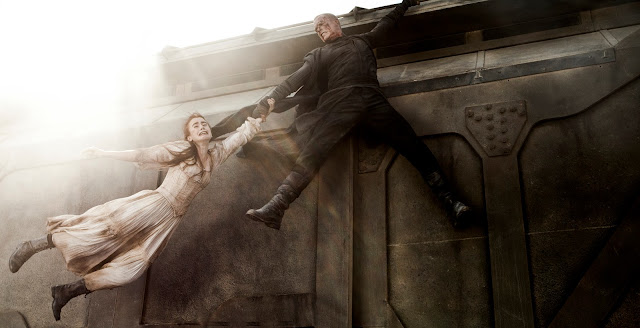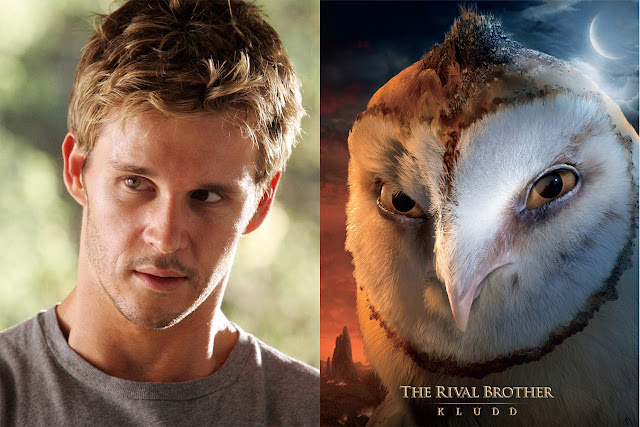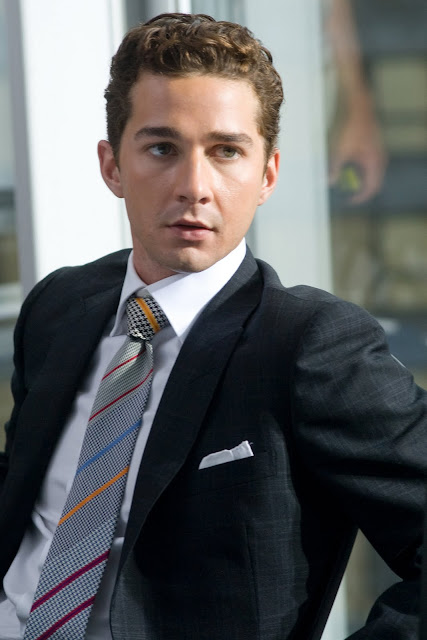"Legion" Director Scott Stewart Discusses Latest Thriller "Priest"
Hot off the success of 2010's “Legion,” director Scott Stewart reunites with Paul Bettany for Columbia Pictures' post-apocalyptic action-thriller “Priest,” based on the Korean manhwa (comic book) by Min-Woo Hyung.
Also starring Cam Gigandet (“Twilight”), Maggie Q, (“Die Hard 4.0”), Karl Urban (“Lord of the Rings”) and Stephen Moyer (TV’s “True Blood”), “Priest” is set in an alternate world -- one ravaged by centuries of war between man and vampires. The story revolves around a legendary Warrior Priest (Bettany) from the last Vampire War who now lives in obscurity among the other downtrodden human inhabitants in walled-in dystopian cities ruled by the Church. When his niece (Lily Collins) is abducted by a murderous pack of vampires, Priest breaks his sacred vows to venture out on an obsessive quest to find her before they turn her into one of them.
The director talks about “Priest” in the following interview:
Q: This is your second time around working with Paul Bettany. Why did you decide to count on him for your second film?
Scott Stewart: Well, we had a great time working together on “Legion.” When I was still finishing up the first one the studio called me and asked me to look at “Priest.” I was a fan of the comic book and a really big fan of Cory Goodman’s script and I thought this was something that I could have a good time with to do something unique and fun. Immediately the question was who should be “Priest.” This character has a very Clint Eastwood/Steve McQueen vibe. He’s this laconic, silent, tough guy, and Paul really embodied that in the last movie we did together. I thought this was a good opportunity to work together again. “Legion” was more of an ensemble cast; this one is more about Paul´s character´s journey.
Q: Did you try to stay faithful to the comic book or was it a free interpretation?
Stewart: When I came in and I read the script I thought, “Wow it’s pretty different than the comic book in some respects.” But it’s emotionally very similar.
I feel like it’s collaboration between me and Cory Goodman, who wrote the screenplay, and Min-Woo Hyung, who created the comic book, and we all put our ideas in. I had Min move out from Korea before we were in pre-production and showed him all the artwork. I had taken some of his imagery and integrated it into the film and some of the iconography of his books because his artwork is so good. And he, much to my relief, was really excited about it and really inspired. So much so that he went back because he never finished the Priest graphic novel series. It was sixteen books but it was a soap opera, it never ended and literally he hadn’t worked on it for a few years. So he was so inspired by what we had done that he went back and started writing again and wrote a new series that sort of takes what he had done and connects it to what we were doing. The graphic novel was the past – it takes place in the 1880s and the film is the future. That is the way we decided to do it.
Q: Both Cam Gigandet and Stephen Moyer have played vampires before. Did you choose them because of their “vampire experience”?
Stewart: It’s funny; we were joking at one point that we were going to try to make sure that everyone we cast in the movie had actually been a vampire before. Like, we wouldn’t cast anyone who had not been in a vampire movie. Actually it really, ironically enough, had nothing to do with that. But we realized that there are so many vampire movies out there that it’s difficult to find an actor that has not played one before. Actually Cam and Stephen play people not vampires. Our vampire movie is really different than most of the other ones that are around these days, the “Twilights” and the “True Bloods.” Our vampires are not people. They don’t look like people. They’re feral, dangerous creatures. They don’t speak English. They’re a mysterious culture and they’re not an obvious metaphor for being different or for repressed sexuality. Our interpretation of vampires is completely different. Vampire mythology is very enduring and every 10 years there’s a resurgence of vampire stories and each time period has it’s own interpretation of them.
We’ve pushed things in a really different direction. Our vampires are the other race that we war against and have warred for centuries. The movie begins after the war is over and the Priests are like these Jedi Knight characters gifted in the art of vampire combat. They have won the war for mankind and the vampires are a demoralized race that has been put on reservations. They basically have been nearly wiped out. There’s a real gray area in terms of the morality. Paul Bettany, Karl Urban and Maggie Q play the Priests in the film and have dedicated a good part of their lives fighting a war against theses vampires. The whole movie is about sacrifice, what soldiers sacrifice and how they come back broken.
So our story begins where the Priests are like Vietnam vets were in the United States where they’re considered pariahs and people are afraid of them and don’t want to sit next to them on the bus but they might be needed again in another war and they have to deal with that. That’s what the movie is really about and all the characters in the movie are dealing with that.
Q: Can you talk a about the 3D aspect of the film? Was it added afterwards?
Stewart: Yes, it was conceived for 3D in terms of visuals but I wanted to shoot in film and use old lenses whereas if we were to shoot in 3D we had to shoot in digital video. I wanted to shoot in film, so for me the conversion to 3D made a lot of sense and I know a lot about the process because of my background in visual effects. I think it looks amazing. I know there has been some criticism to movies that have been converted to 3D after being shot, but many people don’t realize that some of them have actually been really successful. I think the problem is that there were two high profile films that were converted really quickly and it is hard to do it well when you do it on a tight schedule. They could have done those movies well if they had the time to do them.
Q. Sam Raimi is one of the producers of the film. Was he very hands-on while shooting?
Stewart: Not so much while we were shooting. He was busy at the time prepping “The Amazinf Spider-Man.” He did come in and look at the first cut of the movie and give me his thoughts, which were invaluable. He has since come and watched the movie and seen how things progress, his office is literally just a few doors down from my cutting room, so he'll sneak in and say, 'I'm late for a meeting, but show me something! Show me the latest vampire stuff!' It's so great... I don't even have to release the movie. I can die a happy director having Sam Raimi bounce up and down on the couch.
Q. What was the single best piece of advice he gave you?
Stewart: Character, character, character. That's the only thing that matters. Focus on character, and that's what we've worked on. It's a very different movie than “Legion.” The process has been very different. This movie is something where I've shown it to people like Sam and Mike De Luca, Josh Donen, Josh Bratman, people with years of experience who have made many great movies and it's been very helpful for me as a young director, well a not-so-young young director... to be able to share the movie with them as much as possible and get their feedback. I've brought other filmmakers in to see the movie over several months. And all of it has led to something that has helped it to be as good as it can be.
(Opening soon across the Philippines, “Priest” is distributed by Columbia Pictures, local office of Sony Pictures Releasing International. Visit www.sonypictures.com.ph to get the latest movie news, video clips, games and free downloads. Find us on Facebook www.Facebook.com/ColumbiaPicturesPH and join our fan contests.)














Comments
Post a Comment